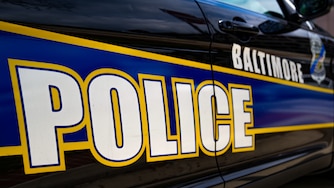After the Chesapeake Bay’s dreaded “dead zones” shrank to their smallest level in decades last year, the oxygen-deprived waters returned to close to recent norms this summer, according to data released Wednesday.
The size of the dead zones tracked mostly a little below their historic average from the time they started appearing in the spring to when they ceased in October, according the new data from the Chesapeake Bay Program, the U.S. Environmental Protection Agency initiative that coordinates bay cleanup efforts across state lines.
Researchers first began tracking these dead zones in 1985. The areas tend to form in deep parts of the bay in warmer months of the year, when algal blooms fed by polluting nutrients die off, depleting oxygen and creating vast areas where wildlife such as fish, crabs and oysters can’t survive.
The new data indicates that the bay performed slightly better this year than researchers had projected in a June forecast, when they predicted that dead zones would cover an area about 4% larger than the 39-year average.
Dead zones typically peak in late July or early August, though this year researchers found they expanded to their largest point in earlier in the summer, with the high winds that accompanied Hurricane Debby in early August helping mix oxygen back into the waters.
The average dead zone peak over the last four decades is 1.62 cubic miles, compared to 1.2 cubic miles at this yea’s peak. The size of the oxygen deprived regions started out larger than average in the spring, but otherwise covered a smaller area through much of the summer, until September. Researchers with the Maryland Department of Natural Resources cautioned that the new data likely underestimates the area in July and early August, when mechanical issues hampered some measurements.
Wednesday’s update comes at a consequential moment in the decades-long Chesapeake Bay restoration effort. The bay recorded its highest environmental grade in more than 20 years this summer, but the restoration effort is about to miss a much-anticipated deadline to achieve a long list of environmental goals by 2025.
As bay proponents prepare for the 2025 deadline to come and go, they’re developing contingencies for the restoration effort in the years ahead.
Next steps are set to be discussed in just a few weeks at a potentially pivotal meeting in Annapolis, where EPA leadership will convene with representatives from Chesapeake watershed states, including Maryland Gov. Wes Moore and Virginia Gov. Glenn Youngkin.
Scientists, meanwhile, have begun to question the long-held strategy of attacking these dead zones in the Chesapeake’s deep waters. Instead, some favor focusing on shallower waters along the coastlines and in the vast watershed that feeds the bay.
At the same time, the return of President-elect Donald Trump to the White House has many bay advocates bracing for a fight over the next four years. Though his proposals were blocked by Congress, Trump tried to slash federal funding for the bay cleanup four times when he was last president, and he’s widely expected to gut environmental regulations.
Alison Prost, vice president of environmental protection and restoration for the Chesapeake Bay Foundation, emphasized the importance Wednesday of leaders convening from across state lines to come up with a plan for the cleanup at a critical juncture. So far, no governors aside from Moore and Youngkin have confirmed plans to attend the Annapolis meeting, and Prost urged leaders across the Chesapeake watershed to come in person and recommit to restoration goals.
“Too much pollution from six states and Washington, D.C., still flows into the bay and fuels this degrading phenomenon that chokes underwater life,” Prost said in response to the latest data. “As the 2025 deadline approaches, we’re at a crossroads. At the Chesapeake Executive Council meeting this December we must see leadership, partnership and accountability.”
Chesapeake Bay Program spokesperson Rachel Felver said Wednesday that the initiative has been told there’s a “strong chance” Pennsylvania Gov. Josh Shaprio comes to Annapolis for next month’s meeting, while the EPA’s Acting Deputy Administrator Jane Nishida, former Maryland environment secretary, also plans to attend.
Apart from historically high dead zone coverage in 2019, after record rainfalls, reports have shown that the oxygen deprived regions of the bay have been near or below average in recent years — a good sign that management strategies are working, said Marjy Friedrichs, research professor at the Virginia Institute of Marine Science, in a statement.
Still, she stressed that advocates have to keep pushing to outpace the effects of climate change.
Mark Trice, a water program manager at the Maryland Department of Natural Resources, which leads the Bay monitoring effort alongside Virginia Institute of Marine Science, similarly cautioned that progress isn’t always linear.
Restoring the Chesapeake Bay is a monumental task, he said, and improvements are likely to happen incrementally.





Comments
Welcome to The Banner's subscriber-only commenting community. Please review our community guidelines.